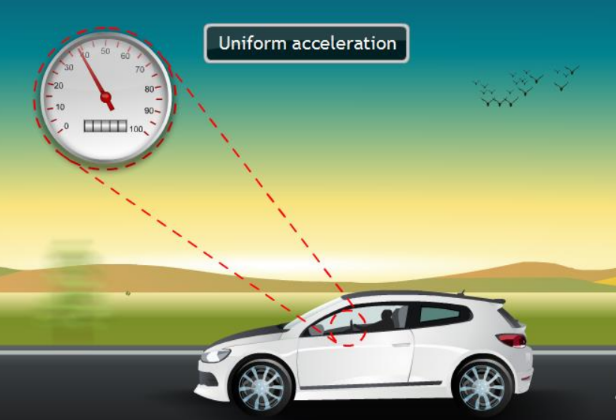Motion – Complete Guide For Class 9 Science Chapter 7
Welcome to iPrep, your Learning Super App. Our learning resources for Chapter 7, “Motion,” in Class 9 are designed to ensure students grasp this fundamental concept with clarity and precision. We provide a range of tools to facilitate a deep understanding of motion, including interactive animated videos that illustrate key concepts, detailed practice questions for hands-on learning, and comprehensive notes that cover all essential topics. These resources are carefully curated to cater to different learning styles, helping students visualize and apply the principles of motion effectively. By integrating engaging explanations with practical examples, our resources aim to build a solid foundation in physics, enhancing students’ confidence and proficiency in the subject.
The concept of “Motion” in Class 9 explores the basic Motion is a fundamental concept in physics, referring to the change in the position of a body relative to its surroundings over time. In this guide, we’ll explore various aspects of motion, including types, definitions, and equations that describe how objects move.
Key Concepts of Motion
1. Definition of Motion:
- Motion refers to a change in the position of an object concerning its surroundings and over time.
2. Associated Terms:
- Speed: The rate at which an object covers distance.
- Velocity: Speed with a specified direction.
- Acceleration: The rate of change of velocity.
Types of Motion
- Rectilinear Motion:
- Motion along a straight line, such as a car driving on a straight road.

- Path of Motion:
- Straight Line
- Circular Path

- Rotatory (Circular around a fixed point)

- Vibratory (Back and forth movement)

- Combination of the above
Distance vs. Displacement
- Distance: The actual length of the path traveled, a scalar quantity always positive.

- Displacement: The shortest distance between the initial and final points, a vector quantity that can be positive, negative, or zero.

Comparison:
- Distance is always greater than or equal to displacement.
Types of Motion
- Uniform Motion: Equal distances in equal time intervals.

- Non-uniform Motion: Unequal distances in equal time intervals.

Speed and Velocity
- Speed: Distance traveled per unit time, a scalar quantity with units in m/s.

- Uniform Speed: Equal distances in equal time intervals.
- Average Speed: Total distance divided by total time.

- Velocity: Distance covered per unit of time in a specific direction, a vector quantity.

- Uniform Velocity: Equal distances in specific directions in equal intervals.
- Average Velocity: Arithmetic mean of initial and final velocity.

Acceleration
- Acceleration: The rate of change of velocity, a vector quantity measured in m/s².
- Uniform Acceleration: Velocity changes by equal amounts in equal time intervals.

- Non-uniform Acceleration: Velocity changes by unequal amounts in equal time intervals.

Retardation
- Retardation: Negative acceleration when velocity decreases, measured in m/s².
Circular Motion
- Circular Motion: Motion along a circular path, where speed remains constant but velocity is not uniform.
- Examples: The motion of satellites, the moon around Earth, and Earth around the sun.
Uniform Circular Motion: Constant speed in a circular path.
Graphs of Motion
- Distance-Time Graph:
- Stationary Objects: A horizontal line.

- Uniform Speed: A straight line with a positive slope.

- Non-uniform Speed: A curved line.

- Velocity-Time Graph:
- Constant Speed: A horizontal line.

- Uniform Acceleration: A straight line with a positive slope.
- Non-uniform Acceleration: A curved line.
Equations of Motion

In conclusion, our comprehensive guide for Class 9 Science Chapter 7 – “Motion” aims to provide students with a solid foundation in understanding this fundamental concept. The chapter on “Motion” covers essential topics such as the definition of motion, types of motion, speed, velocity, and acceleration, along with practical examples and detailed explanations.
By using interactive tools and resources available on iPrep, students can enhance their grasp of motion, visualize complex concepts, and apply them effectively in various contexts. Mastery of the principles outlined in Chapter 7 – “Motion” is not only crucial for excelling in physics but also for understanding the dynamics of physical systems in real-world applications. With the resources and support provided by iPrep, students can confidently navigate the intricacies of motion and build a strong foundation for future scientific learning.
For further exploration and practice, revisit our resources for Class 9 Science Chapter 7 – “Motion,” and continue to leverage the interactive tools designed to support your educational journey.
Practice questions on Chapter 7 - Motion
Get your free Chapter 7 - Motion practice quiz of 20+ questions & detailed solutions
Practice Now








